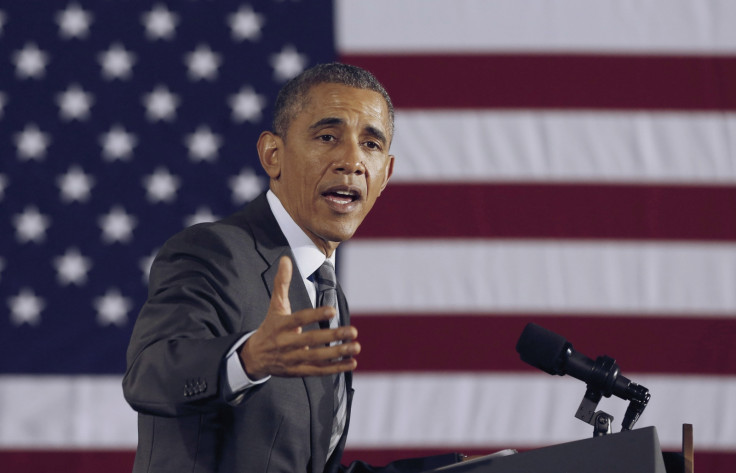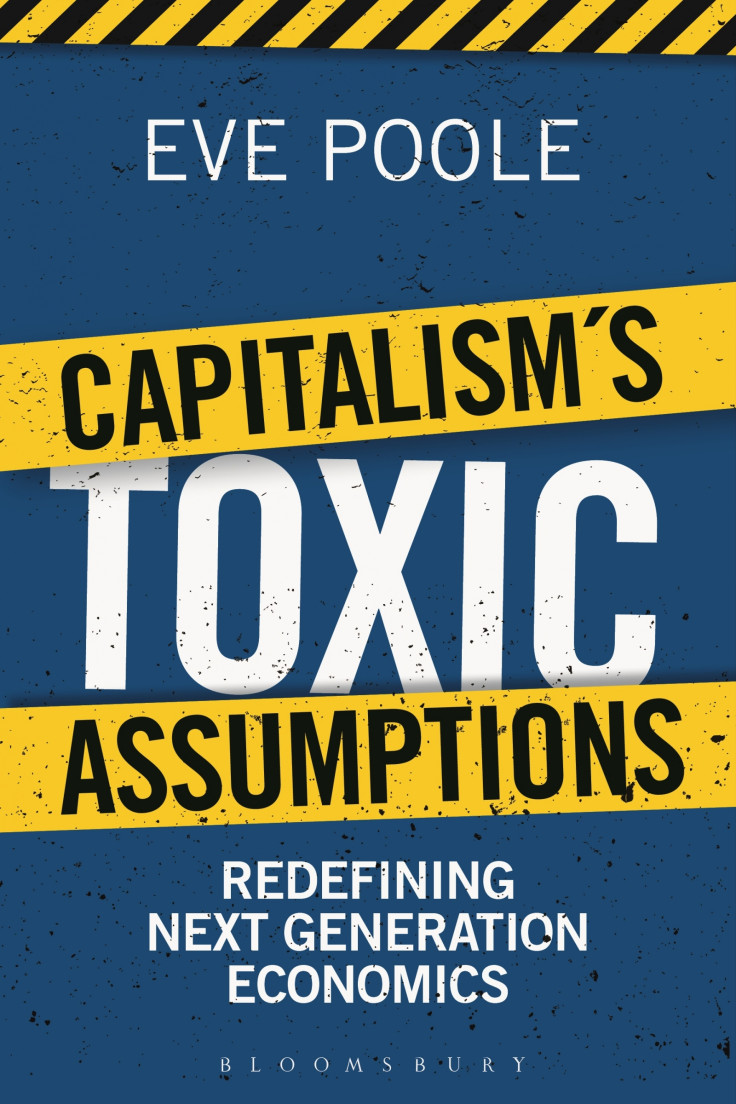Eve Poole: We must challenge the toxic assumption of shareholder supremacy over companies
This is the second in a series of three exclusive extracts from the book Capitalism's Toxic Assumptions: Redefining Next Generation Economics by Eve Poole, published by Bloomsbury Publishing and Ashridge Business School on March 26. To order a copy at 20% off, please visit the Bloomsbury website or call 01256 302 699 and quote the reference 'GLR DK8 ' when you place your order. Offer ends April 5.

One iconic story of a modern business start-up, which heralded the birth of Silicon Valley, was the classic 'two blokes in a garage' story of Hewlett-Packard.
In 1939, Bill Hewlett and Dave Packard established Hewlett-Packard (HP) in Packard's garage in Palo Alto, with an initial capital investment of around $500. They struck lucky winning an early contract from Walt Disney and moved out of the garage, incorporating in 1947.
Ten years later, HP went public, to help with estate planning for its founders, and to enable employees to share in the company. The shares sold for $16, and the float financed new offices, an acquisition, and overseas expansion. After a series of inventions, acquisitions, de-mergers, and a merger with Compaq, HP is now the world's largest IT company, with annual revenues in the region of $127bn (£83bn, €115bn).
This fairly typical account shows how share-ownership tends to work. Companies are usually started with private or loan capital, or by attracting partners willing to invest money in exchange for a share in the business. When they achieve the sort of scale that needs a serious injection of cash, they will tend to float on the stock market. This Initial Public Offering (IPO) might also be an opportunity to reward the original investors for their commitment.
Equally, an established business might want additional funds to finance expansion, so might ask existing or new partners to provide fresh funds in exchange for shares. Companies may then return to the market periodically for more funds, and each time they acquire, merge or de-merge, the nature of the shareholding changes.
Invariably, their 'founder' shareholders may die, or wish to pass on their share to another party. This creates a market for the original shares, which attracts individuals or institutions that reckon a share in this particular enterprise will allow them to share in that enterprise's future profits. Traditionally, shares were acquired not so much for their gradual appreciation in face value over the long-term, but for the regular dividend income they provided, which turned them into a type of annuity. This made an equity portfolio ideal to finance regular living expenses, or as part of pension planning. Regardless of their status or reasons for investing, 'the shareholder' has become central to the company narrative.

However, the assumption of shareholder supremacy is not only toxic, it is intuitively wrong. The function of shares is to provide occasional capital to a given business. For many businesses, this only happens a few times over the life of the corporation: once at launch, and maybe two or three times later on to finance milestone investments or acquisitions. Indeed, shares act as a special type of loan financing, except that shareholders may lose their investment as well as reap a profit, hence their use in Shariah-compliant banking to share risk and reward and avoid involvement with usury.
Indeed, it is precisely because of the shadow cast by usury laws in general that joint stock companies – whereby two or more individuals invest by paying for a 'share' in the enterprise – became the most popular form of business organization in the first place. Historically, sharing risk and reward through some kind of partnership was the only legal way to raise capital.
...the assumption of shareholder supremacy is not only toxic, it is intuitively wrong.
But an analysis of modern shareholding shows how bizarre the obsession with shareholder value now is. Looking at data produced by the UK Office for National Statistics, based on shares quoted on the London Stock Exchange, around 40% of UK shares are currently held by foreign investors. No breakdown of this 40% is available, but the remaining 60% shareholding can be apportioned in the following way: individuals own a sixth of it, and institutions five-sixths.
So we can immediately dispense with the caricature of the shareholder as a loyal, tweed-suited old man who stumped up his hard-earned cash to prop up the business when it needed him, and who can therefore not be left out in the cold in his dotage. The vast majority of an organisation's 'shareholders' are probably hunched in front of a spreadsheet, monitoring share prices for their customers, and switching stocks if movements threaten the integrity of the portfolio as a whole.
This picture is brought into sharp relief by modern trading practices. Ignoring for the time being distortions created by the secondary markets, equity trading is now so sophisticated that in many cases it is executed automatically by computer, using algorithms designed to take advantage of infinitesimal changes in price (and split-second early warning of them) to keep a portfolio within given parameters. This 'high-frequency trading' has been taking place at least since the US Securities and Exchange Commission (SEC) authorized electronic exchanges in the United States in 1998, presumably on the grounds that this hyper-liquidity could only assist the price mechanism in a trading environment. Now, there is a race to speed up this already superfast technology, with the new Illinois–New Jersey data link utilising microwaves to achieve transactions that are almost instantaneous.

Just to indicate the scale of this activity, in 2010 the Wall Street Journal reported that high-frequency trading comprised 53% of stock market trading volume, although estimates for some exchanges take this figure up to 80%. And the speed? According to Michael Lewis, it takes a human eye at least 100 milliseconds to blink, but it takes less than a tenth of this time for a trade to travel between Chicago and New York.
This activity can have a dramatic effect. As a specific example of this, consider the research carried out by the physics department of the University of Miami into so- called 'flash crashes', like the mysterious one that occurred on May 6, 2010. That afternoon, the Dow Jones Industrial Average suddenly plunged 1,000 points – about 9% – only to recover within minutes once an automatic stabiliser on the futures exchange cut in and paused trading. It was the second largest ever swing, and the biggest one-day decline in the history of the Index.
The Miami research looked at transactions on multiple stocks across multiple exchanges between 2006–11, looking particularly at those transactions that occurred in sub-second time frames and were thus driven by algorithm. The research uncovered 18,520 ultra-fast anomalies in stock-price activity, either crashes or spikes, where 'ultra-fast' means those transactions occurring beneath the sub-650 millisecond threshold for crashes and the sub-950 millisecond threshold for spikes. This revealed an average of one momentary spike or crash per trading day.
It's still not clear why these happen, but the fact that the algorithms are now programmed to respond to news headlines is likely to lead to more chaos. On April 23, 2013, a tweet on The Associated Press' Twitter feed indicated that two explosions had occurred in the White House, injuring President Barack Obama. While it took only minutes for the tweet to be exposed as a hoax, it was too late. The Dow had already plunged more than 140 points, and bond yields fell. Reuters estimated that the temporary loss of market cap in the S&P 500 alone was $136.5bn. While some of this activity was dealer-led, the scale and intensity of the spike was driven by high-frequency trading, which had taken the tweet at face value.

But whether or not algorithmic trading is destabilising, morally questionable or potentially useful, the Miami research serves to illustrate how radically different today's 'shareholder' world has become. Sources vary on the average time for which a share is now held. Some say 11 seconds, some say 22, some claim an average between 20 and 30 seconds. Even if high-frequency trading on equities exchanges reduces, perhaps through taxation, the fact that a consensus would agree an average holding time of under a minute means that the immediate problem facing a company obsessed with shareholder value is, which shareholder, and when? Who exactly is the company accountable to, given this blur of faces in any given day, let alone the army of shareholders fading in and out over an entire reporting year?
Apart from the problem of 'who' the shareholder really is, and whether shareholder value works as a strategy over the longer term, there is a legal problem with the assumption that it is the shareholders who own the business. Even if one could theoretically isolate each shareholder and run the business collectively but in each of their particular interests, a closer look shows that this concept is actually another toxic assumption. Let's have a look at what shareholders actually 'own'.
The rhetoric of shareholder as owner is both compelling and widely assumed, and it has been immortalised by negative language from the likes of Marx about capitalists exploiting the proletariat through their ownership of the means of production.
In a UK public limited company, the ownership of a share conveys a right to a share certificate, the right to ask the court to call a general meeting, the right to vote, the right to a dividend if one is paid, and the right to have the company wound up. Other rights include the right to an AGM and access to various notices, registers and annual accounts. And a shareholding can of course be sold. But what does 'ownership' then mean in this context?
If I own a house, I can do what I like with it, within the law. But owning a 'share' is not really owning a company in the same way. If a company goes bad, I lose my stake and all of the rights listed above, but am protected against other losses through limited liability. If it goes well, I get a stream of dividends. If it goes so well that the company gets sold on or cashed in in some other way, I get a share of the spoils, in the same way that if I sold my house I would reap the profit. But I don't 'own' the company, I just receive certain rights along with my share certificate, none of which really give me much say in the day-to-day running of the entity, or any claim on profits unless the board declares a dividend.
To use our house metaphor, as a shareholder I am much more like a member of the local neighbourhood watch than I am the 'owner' of the house, for all the practical control I really have over the big decisions affecting my property, yet I stand to benefit or lose out from its fate.
The rhetoric of shareholder as owner is both compelling and widely assumed, and it has been immortalised by negative language from the likes of Marx about capitalists exploiting the proletariat through their ownership of the means of production. But the idea of shareholder as owner evaporates under close scrutiny. For example, Paddy Ireland at the University of Kent notes that the landmark English case of Bligh v. Brent (1837) established that shareholders had no direct interest, legal or equitable, in the property owned by the company, just a right to dividends and a right to assign their shares for value.

By 1860, the shares of joint stock companies had been established as legal objects in their own right. This separation of them, as forms of property independent of the assets of the company, effectively disassociated them from the assets of the company. These assets were now owned exclusively by the company, while the share capital of the company was the sole property of the shareholder. Ireland argues that this rather thin idea of ownership without control was deliberate. This is because the legal vehicle of the 'company' was primarily a gambit to share financial risk and reward without falling foul of the usury prohibition, which otherwise effectively prevented enterprise by starving it of loan capital. Most investors by this point had a range of financial interests, and might well have preferred the loan route had it been available to them. So, in the main, they tended only to be interested in the enterprise itself insofar as they were liable for it, a residual interest which evaporated with the advent of ubiquitous limited liability.
Current criticism of 'shareholder value' assumes that shareholders who seem more interested in financial return than in the business in which they are invested is a peculiarly modern phenomenon. History suggests that this may have been the case for far longer than has been popularly supposed, however, and that the issue is more a toxic fault line in corporate law than a temporary fashion.
Indeed, the categories of 'rentier' and 'capitalist' were included in the UK national census until the 1960s, as options under the rather judgmental category of 'no gainful occupation stated'. True, the rise of the institutional investor, the relaxation in regulation and advances in technology have elevated share-trading to a highly sophisticated art, but this background shows that the rot had already set in well before these changes accelerated the process of alienation.
The toxic assumption of the absolute sovereignty of the shareholder, then, no longer makes any sense. Given their legal status, and the fact that modern patterns of shareholding makes them an increasingly elusive species, an appeal to the shareholder now resembles more of a veiled appeal to the self-interest of the stock-incentivised senior management, or an appeal to the corporate equivalent of Santa Claus in an attempt to get the children to behave.
This distracting assumption has driven unhealthy short-termism, inculcated bad habits concerning measurement and strategy, and encouraged companies to adopt too narrow a definition of their responsibilities. While many of these problems are already being corrected by useful pressure from the sustainability and corporate social responsibility agendas, companies need to be more proactive about putting their shareholders back into perspective.
A useful starting point would be to review their relative importance compared with other stakeholders, many of whom add significant current value to the business, rather than having an often rather distant and minor historical claim.
© Copyright IBTimes 2025. All rights reserved.






















